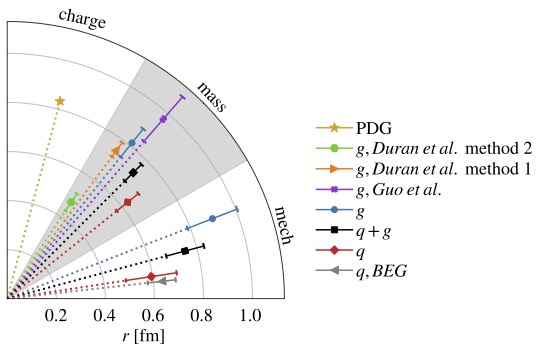Gravitational form factors of the proton revealed by theory and experiment
The contribution of up, down and strange quarks and gluons to the gravitational form factors of the proton has been computed for the first time.

The Science
The proton’s gravitational form factors encode fundamental aspects of its structure, including various measures of its shape and size. New first-principles theory calculations have determined all separate quark and gluon contributions to these form factors for the first time, revealing the proton’s mechanical radius, mass radius, and so-called `D-term’, which is related to the pressure distribution inside the proton.
The Impact
For some aspects of the gravitational form factors, the theory results complement experimental efforts and distinguish between different analyses of experimental data constraining these quantities. For others, the theory results are the first constraints of any kind, setting important benchmarks on these fundamental aspects of proton structure for future measurements at Thomas Jefferson National Accelerator Facility and at a future Electron-Ion Collider.
Summary
New first-principles calculations of aspects of the proton’s gravitational form factors permit first comparisons between theory and experiment for several aspects of these fundamental measures of proton structure, revealing new aspects of its shape and size.
Contact
Phiala Shanahan
Massachusetts Institute of Technology
pshana@mit.edu
Publications
-
V. D. Burkert, L. Elouadrhiri, F. X. Girod, C. Lorcé, P. Schweitzer, P. E. Shanahan Colloquium: Gravitational form factors of the proton Rev.Mod.Phys. 95 (2023) 4, 041002,
-
Daniel C. Hackett, Patrick R. Oare, Dimitra A. Pefkou, Phiala E. Shanahan Gravitational form factors of the pion from lattice QCD Phys.Rev.D 108 (2023) 11, 114504
-
Daniel C. Hackett, Dimitra A. Pefkou, Phiala E. Shanahan Gravitational form factors of the proton from lattice QCD Under review

